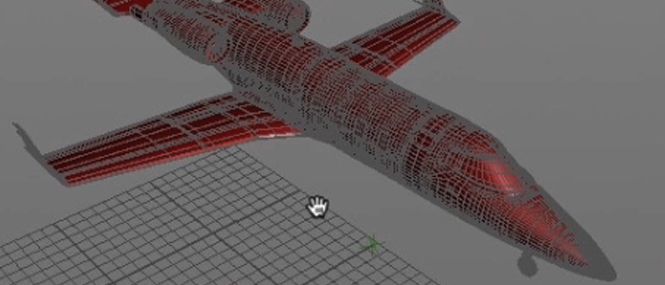Teaching HOU209: Dynamic Rigging in Houdini 13 this term is Jens Mårtensson. Now a Senior TD at Framestore, Mårtensson has worked at some of the big studios, including MPC and Dneg, and his recent credits include Rush and Godzilla. We find out his thoughts on Houdini, get some tips and tricks and discover what you can expect from his dynamic rigging course.
Find out more about Jens Mårtensson’s HOU209: Dynamic Rigging in Houdini 13 course, where Jens uses a small project to teach some of the new features of Houdini 13, mostly in DOPs, using Bullet Rigid Body Dynamics.

fxphd: Can you talk about your visual effects path a little – what led you into commercials work at Framestore?
Mårtensson: I started with 3d in the middle of the 90’s with Softimage 3D on SGI Machines. From there it’s been a long road to where I am today. Commercials, TV and feature films in Sweden to high end FX in hollywood movies at MPC and DNEG in London. I always admired Framestore for their work and I know they have long tradition of using Houdini, so when I got the opportunity to work there, it was a goal I had set up a long time ago, that it would be fantastic to work there someday.
fxphd: From an overall perspective, what do you think are some of the important things to look out for as an FX TD?
Mårtensson: I always think that reference is one of the most important things in CGI overall. And to be a good FX TD, math and some basic physics is essential.
fxphd: Can you talk about your first experiences with Houdini, and how you’ve watched the product develop?

Mårtensson: I had my first experience with it when they released version 7, the apprentice version.
Then my company bought two licenses so we got to use the beta version for version 9, which was a major upgrade from version 8. And I can truly say that I really love Houdini, always did, and I don’t get paid from SideFX to say that. So from then, its been my main choice for doing 3D. And it has evolved into something more then people tend to think, its a very general 3D software, not just fx.
fxphd: What are some of your go-to tools and workflow tips inside Houdini that you couldn’t live without?
Mårtensson: Foreach SOP and Open VDB nodes. I love the whole Open VDB implementation into Houdini. CHOPs also have a big role sometimes in my projects, it’s a world of its own. And the help documents are the best reference and all the example files that get shipped are always a good start for people who struggle with a specific task. I am using them all the time, before even going to the Sidefx.com or Odforce.net forums.

fxphd: Any work you’ve seen recently done in Houdini I that you would recommend people check out?
Mårtensson: I truly admire the work that Axis Animation in Glasgow is doing, overall very good CG ,almost every thing they do is Houdini, And a lot of the later fx work done by Dreamworks, Disney Animation and Pixar has been done in Houdini.
fxphd: When did you first come into contact with fxphd?
Mårtensson: I think I did my first course there in 2007, I wanted to learn more about matchmove, one of the most important thing in creation of CGI and I did a few terms just to keep me updated with Nuke.
fxphd: What do you hope students can take away from your Dynamic Rigging in Houdini course?
Mårtensson: Hopefully they will learn that a good setup in SOPs will make life so much easier in DOPs. And I hope my setups will bring some new ways of doing quite complicated shots, so you don’t need big resources to create big Hollywood shots.
Find out more about Jens Mårtensson’s HOU209: Dynamic Rigging in Houdini 13 course.
